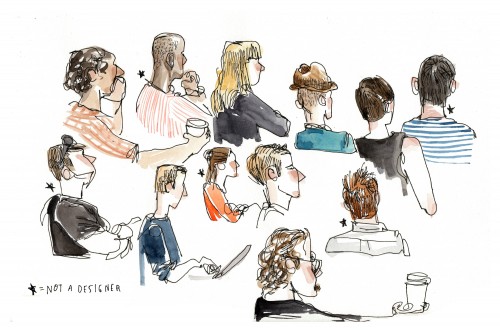“We began as artist and dealer, but it developed into the most important personal relationship I made in my 16 years in the field,” says Chicago gallery director Paul Berlanga of his friend, Art Center alumnus Wayne Forest Miller (Photography ’41). They met in 2001, at an exhibition of Miller’s work at Northwestern University’s Mary and Leigh Block Gallery. “After a momentary glance at his work on the walls [the Bronzeville series], I knew the Stephen Daiter Gallery needed to represent this man.” Miller, a Chicago native, was 82 years old at the time, with a long and legendary career behind him — World War II photographer in Edward Steichen’s elite U.S. Navy Combat Photo Unit, member of Magnum Photos, and recipient of two consecutive Guggenheim Fellowships for his landmark project documenting the African American community on Chicago’s South Side in the late 1940s. Miller, who lived in the Bay Area with his wife of 70 years, passed away on May 22, 2013. Berlanga gave a eulogy at the California memorial service last fall, and now shares his memories of the photographer — “Wayne always preferred ‘working photographer’ to artist” — with Dotted Line.
Author Archives: Sylvia Sukop
MLK Day: For Photo alum Van Evers—son of civil rights leader Medgar Evers—giving a photograph is as rewarding as taking one
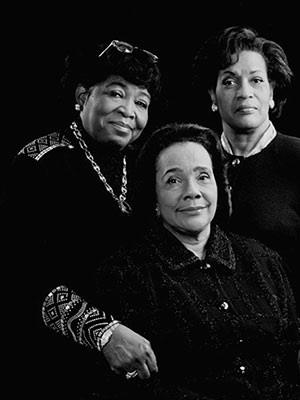
Dr. Betty Shabazz (educator and widow of Malcolm X), Coretta Scott King (activist and widow of Dr. Martin Luther King Jr.) and Van Evers’ mother, Myrlie Evers-Williams.
Though he rarely grants interviews, this week Van Evers agreed to talk with Dotted Line about his education and career, and also about his family legacy—an important part of our nation’s history as well as his own.
Los Angeles is not merely the backdrop for an Art Center education. It’s a living laboratory for artistic experimentation and, as the capital of an Industry so pervasive it needs no other name, a source of gainful employment.
Photography alumnus James Van Dyke Evers (who goes by “Van”) has an especially coveted gig in entertainment as the official photographer for the L.A.-based Tavis Smiley show on PBS. Over the past six years he has photographed hundreds of A-list guests on the nightly talk show, a who’s who of contemporary culture and politics, from Prince to Anthony Hopkins, from James Taylor to President Barack Obama.
“My job is to capture that special energy between two people,” says Van, who may be unique in the fast-paced world of TV talk shows for making sure every guest leaves with a framed print commemorating their appearance on the show. It entails working with lightning speed and decisiveness, and often literally running to catch guests as they step into their waiting limos.
“Most shows deliver digital images to the publicist later, and we do that too,” he says. “But handing the guest a physical print, to hold in their hands—it means so much to that guest, and it puts a smile on their face.”
That grateful smile is what made Van choose a career in photography.
Van picked up his first camera as a nine-year-old at summer camp and made his first prints in an old shed. “Light leaked everywhere, it was a real mess, but when I saw that print come up in the developing tray, that was it.”
Art Center’s top-tier facilities and dedicated faculty helped Van hone his craft, teaching him professional skills and life lessons that continue to serve him. Looking back he singles out instructors like Charlie Potts and Peter Suszynski and fellow students like Everard Williams and Jeff Sedlick (who both now serve on the faculty), and Neal Brown and Sean Thonson. And he gladly shares his own “must do”s for aspiring photographers: “Be on time. Listen to the client’s needs. And prep, prep, prep! Have a backup plan. Because things can and will go wrong. If you don’t get the shot right away, it’s over. You don’t get a second chance.”
LAUSD and Art Center partner against gun violence
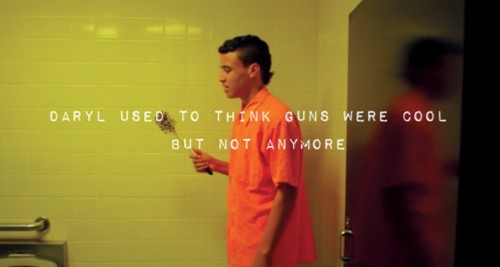
Los Angeles Unified School District (LAUSD), the nation’s second largest public school system, has joined forces with Art Center’s renowned social impact department, Designmatters, to implement Designmatters’ cutting-edge health curriculum, Where’s Daryl? Designed to get teens and tweens talking about gun violence in an effort to prevent it, the middle school classroom toolkit is part of Uncool: The Anti-Gun Violence Project, an award-winning program supported by the Nathan Cummings Foundation and dedicated to the memory of Norman Schureman (Product Design ’85), a beloved Art Center instructor who lost his life to gun violence in 2010.
Grateful for what designers bring to the table: Honesty––its power to change the conversation and the world
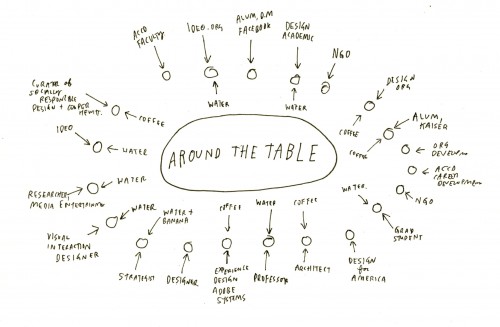
A new video by alum Erik Anderson — about the convening at Art Center of social innovation design students and educators, corporate and nonprofit leaders — has made Good’s 2013 Top 10 list. Illustration © 2013 Wendy MacNaughton for LEAP Symposium
“For all of you designers who need inspiration to conquer the wicked problems we face in the world today,” says Mariana Amatullo, “let’s remember that honesty, coupled with a good measure of bold determination and ingenuity, can help us leap forward.”
For Amatullo, Art Center vice president and co-founder of the social impact department Designmatters, honesty is an ethos that informs all of her work with her team at the College and with a growing cohort of young designers leading a global movement using “design thinking” to address seemingly intractable challenges—from homelessness and gun violence to water poverty and gender inequality—in ways that have never been tried before.
“We’re at a point where thousands of students across the country, in high school and college and graduate school, are joining [this] movement to participate in and impact the world around us,” says William Drenttel, an award-winning designer, publisher and design leader.
Along with Drenttel and like-minded colleagues at Art Center and around the country, Amatullo recently organized a national gathering of professionals and students to explore opportunities for strengthening the movement and shaping its future. A chief concern of the LEAP Symposium: How to make design for social innovation a viable career with navigable pathways, and how to prepare both students and potential employers for an era in which designers will be—must be—at the table in discussions large and small about solving the world’s “wicked problems.”
Here’s an idea. Try this out around your own Thanksgiving dinner table: When you’re sharing what you’re grateful for this year, be completely honest. Continue reading
Art for artists’ sake: Sharon Lockhart collaborates across time with dance composer Noa Eshkol
Artforum called Sharon Lockhart’s meditation on the visionary work of Israeli dance composer and textile artist Noa Eshkol (1924–2007) an “intimate conversation of ideas simulated across the gulf of history.” The New York Times hailed the five-channel film installation as a “subtle but virtuosic move.” And the Los Angeles Times described it as “a sensitive portrait of a formidable artist.”
If you didn’t get a chance to experience the Art Center alumna’s acclaimed exhibition in person at the Los Angeles County Museum of Art (LACMA) in 2012 or at The Jewish Museum in New York earlier this year, the catalog presents an opportunity to delve deeply into the two artists’ unusual “collaboration.” Edited by LACMA’s Stephanie Barron and Britt Salvesen, Sharon Lockhart | Noa Eshkol (Prestel Publishing) features an in-depth interview with Lockhart; photographs of the installation and of Eshkol-Wachman Movement Notation spherical models; a selection of Eshkol’s wall carpets, scores and drawings; as well as several essays.
It’s not the first time Lockhart, who completed her MFA in Fine Art/Painting in 1993, has trained her lens on the work — and sometimes literally the labors — of others. In this case, Lockhart says, she was drawn to Eshkol’s “radical” practice and the “labor of love” that Eshkol’s devoted students, many of them aging, enact in preserving and performing her rigorous compositions.
This story originally appeared in Art Center’s Fall 2013 Dot magazine, where you’ll find more images from Lockhart’s installation as well as profiles of other notable alumni at work.
ACCD reciprocity: Corporate partnerships seed design innovation and design careers
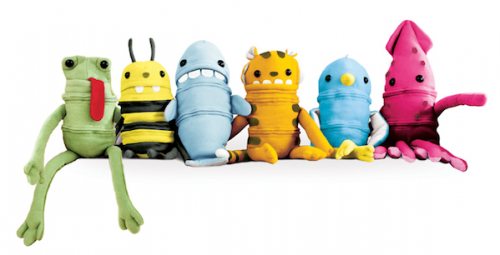
Meet the Clump-O-Lumps, designed by Max Knecht
The day Max Knecht pulled a squid, a walrus, a deer and a bunny out of a bright green vintage suitcase is the day he landed his first big deal as a designer.
“It was a formal meeting in [Knock Knock company founder and CEO] Jen Bilik’s office,” recalls Knecht PROD 11, who was still a student at the time. “But bringing all those animal body parts in a suitcase broke the seriousness.”
These were no ordinary plush toys. An imaginative take on swapping identities, Knecht’s bright-colored animals had a clever postmodern flair. Each one separated into three segments, and he demonstrated for Bilik how these “lumps” could be zipped together in any combination. She loved the crisscross-creature concept and offered Knecht a buyout on the spot. Today six different Clump-O-Lumps are available on Knock Knock’s website.
It’s tempting to call moments like this magic, the proverbial rabbit pulled out of a hat. Or a lucky break, all about who you know.
But it was none of these.
A bold LEAP in an emergent field: “Creative citizens” forge new pathways in design and social innovation
Editor’s note: This is the first in our Dotted Line series of three stories from “The New Professional Frontier in Design for Social Innovation: LEAP Symposium,” hosted by Art Center College of Design, Sept. 19–21, 2013.
__
Can design propel social change? If reducing infant mortality risk from HIV in Africa or improving rice crop outcomes among low-income farmers in Asia are any measure, the unequivocal answer—as participants in a three-day immersive symposium at Art Center amply demonstrated—is yes.
Less definitive are answers to the question that prompted the gathering: If I am a designer interested in this kind of work, what kinds of career pathways are available to me?
Organized by the College’s social impact department Designmatters with curatorial contributions from a “braintrust” of pioneers in the rapidly emerging field of design for social innovation, the LEAP Symposium kicked off September 19 at Art Center’s Hillside Campus in Pasadena, giving more than 100 invited participants from across the country an opportunity to examine current professional practices, values and opportunities; share challenges and successes; and envision possibilities for the future.
Why LEAP?
“To leap is not to move timidly, but to advance with great determination,” said Mariana Amatullo, co-founder and Vice President, Designmatters, in her opening remarks in Ahmanson Auditorium. “Design offers an unmapped frontier for social innovation, and the symposium is intended to serve as a platform for creative leaps into that space.”
Amatullo noted that the symposium would be “seeded with probes and what-if scenarios” and that honesty was the most important element of the “genuine conversation and free exchange of ideas” she hoped to foster. She also thanked the many individuals, organizations, companies, networks and foundations that made the LEAP symposium possible, including The National Endowment for the Arts and the Surdna Foundation, along with private sector partners Steelcase, Adobe, Sappi and Autodesk.
She posed three main questions as a point of departure for LEAP: What is design for social innovation? How does it manifest? Why does it matter?
“This is a time when we recognize a sense of urgency for social change to happen—perhaps on a broader scope than ever before—and with it, a call for path-creating forms of collaboration, and generative modes of intervention,” said Amatullo.
Participants, comprised of 60 percent designers and 40 percent non-designers, ranged from leaders at global NGOs and design firms to still-in-school designers directing their education toward social innovation.
Students officially made up 10 percent of participants, but at LEAP, everyone was there to teach, and everyone was there to learn. Continue reading
Alum Neil Shigley makes the invisible visible
For the portrait artist, block printing is a particularly labor-intensive form. For San Diego-based Neil Shigley, it’s a labor of love.
The Art Center Illustration alum, who documents his adopted city’s homeless in search of “the most honest portrayal that I can get,” is among 48 artists whose work is included in the Outwin Boochever Portrait Competition, a juried exhibition at the Smithsonian’s National Portrait Gallery on view through Feb. 23, 2014.
“They are people who are, to most of us, invisible. They are the homeless,” says Shigley’s artist statement. “I have focused my art on capturing the incredible character that life on the streets has given these individuals, many of whom are from my neighborhood near downtown San Diego. As a human being I can’t help but feel compassion . . . and by presenting them in this large format perhaps it will bring them into focus. Making them visible.”
Pasadena green-lights Art Center student’s design for Armenian genocide memorial
This week the Pasadena City Council unanimously approved the memorial designed by Art Center Environmental Design student Catherine Menard. The Los Angeles Times reported that more than 150 supporters attended the Sept. 9 meeting, including members of Pasadena’s large Armenian community.
Menard’s design concept was selected by the Pasadena Armenian Genocide Memorial Committee (PASAGMC) in January, at the conclusion of a two-phase competition. The monument will be built at a proposed site in Pasadena’s Memorial Park once PASAGMC completes its fundraising campaign. Dedication of the public artwork is set for April 2015, coinciding with 100th anniversary commemorations of the Armenian Genocide.
Related:
Art Center student wins Pasadena Armenian genocide memorial competition
Aquatopia: Rolling in the deep with Grad Art alumna Jennifer West
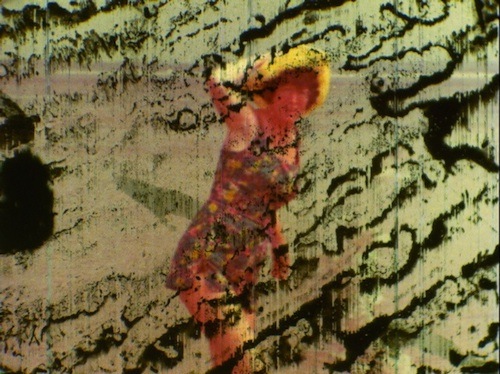
“Heavy Metal Sharks Calming Jaws Reversal Film” (2011) by Jennifer West. Super 8 print transferred to hi definition video with sound.
With 90 percent of the earth’s oceans yet to be explored, “the deep” is and has always been a place of mystery, fear, desire—and wild imagination. One Art Center alum who’s creatively plumbed this furtive, fertile territory is Jennifer West ’04 (Graduate Fine Art). Her recent multimedia work, “Heavy Metal Sharks Calming Jaws Reversal Film” (2011) is featured in Aquatopia: The Imaginary of the Ocean Deep, a major exhibition that opened this past weekend at the Nottingham Contemporary in Nottingham, England, continuing through September 22.
Bringing together more than 150 contemporary and historic artworks, Aquatopia explores how “the deep” has been imagined through time and across cultures. Sea monsters, sirens, sperm whales, giant squids, octopi, submarines, drowned sailors and shipwrecks are all portrayed. In a show that includes iconic works by JMW Turner, Odilon Redon, Hokusai, Barbara Hepworth and Oskar Kokoschka, West finds herself in prestigious company.
West is known for her digitized films that are made by hand-manipulating film celluloid, and the description of materials and processes she used to create “Heavy Metal Sharks Calming Jaws Reversal Film” tells a story in itself: “Faded pink super 8 film print — library copy of select scenes from “Jaws” — from Lorain, Ohio public library — treated with black fabric dye enriched with heavy metals: iron and zinc vitamins, celluloid grated with stone, whipped with hair headbanging, impressed with thumb and pink prints devil ears. Super 8 print transferred to hi definition video with sound.” Total running time: 6 minutes, 47 seconds.
In reviewing a previous show of the artist’s work, Wendy Vogel noted on Artforum.com, “Like her experimental predecessors, West forgoes narrative cohesion in favor of creating jumpy cuts and abstract visual collages — splicing, rolling, and drenching the celluloid using materials from Mylar tape to pickle juice, whiskey to candle smoke.” Writing on West’s work in Frieze, Joanna Kleinberg observed how “the intermingling of materiality, feeling and identity creates a wild blend of synaesthetic experience wherein the substances of life literally and figuratively colour the film.”
Born in Topanga, Calif., West lives and works in Los Angeles. Before earning her MFA at Art Center, she received a BFA from Evergreen State College in Olympia, Wash. She has had solo exhibitions in museums and galleries in Europe, Asia and the U.S., and has done commissioned projects for exhibitions at MIT’s List Visual Arts Center, the Aspen Art Museum and the Tate Modern. West also creates “zines” — DIY photo booklets of production stills of the making of her films — in conjunction with her exhibitions.
Curated by Alex Farquharson, Aquatopia is a collaboration with Tate St Ives in Cornwall, where it will be on view from October 2013 to January 2014.
“Like” Jennifer’s film on Facebook!

